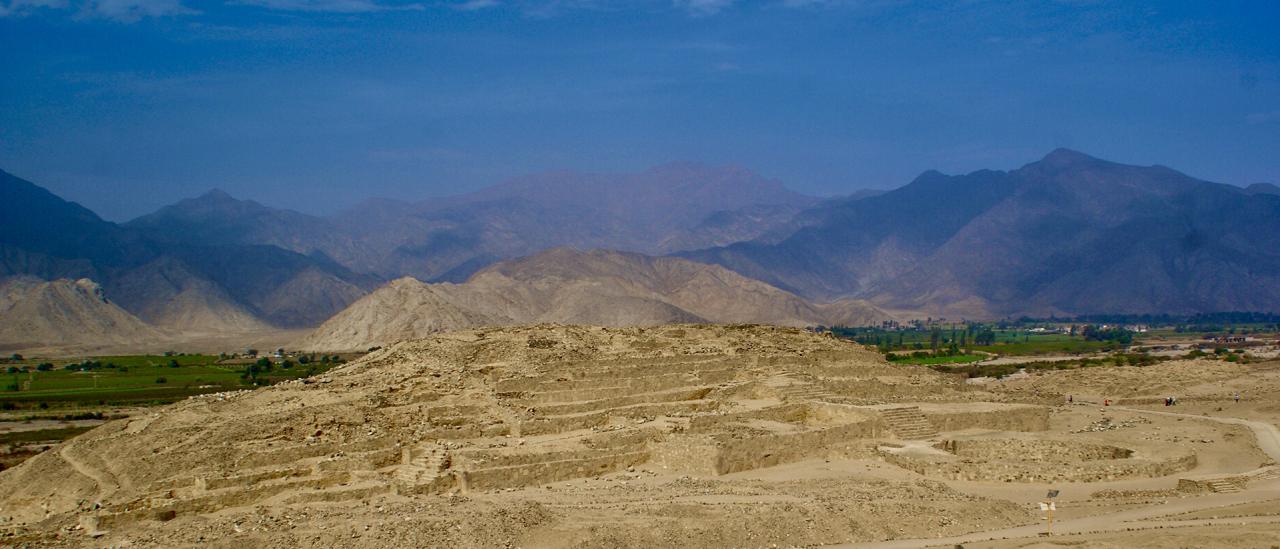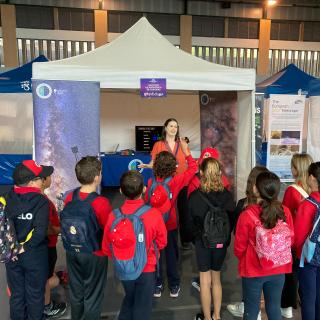A team of researchers, led by the Instituto de Ciencias del Patrimonio (Incipit-CSIC) and the Instituto de Astrofísica de Canarias (IAC), in collaboration with the team from the Arqueological Zone of Caral (Perú) led by Dr. Ruth Shady Solís, has established the relation between the position of the monuments of the Supe Culture (Perú), their orientations, and some astronomical and topographic features, which opens the way to the analysis of the way the inhabitants of this valley conceived space and time 5000 years ago. The results of the study have just been published in the journal Latin American Antiquity.
The valley of the river Supe in Perú contains the first evidence for city building in the Americas. In recent decades in this valley and in the nearby coast, numerous ceremonital sites have been found, with elaborate pyramidal buildings, and large circular open spaces which date back to 3000 B.C. The society which constructed these buildings was based on agriculture using irrigation, notably of cotton and pumpkin, and on fishing as the coast gives access to one of the richest fisheries in the world.
Towards the end of 2016 a campaign of field work was carried out in the Supe valley, taking measurements of the positions and orientations of the more important buildings of this very ancient civilization at the ten most important sites in the valley. “The results of the research in the position and the orientation of the main buildings show that the presence of the River Supe is the main determining influence on the orientation of the buildings because although they are not sited directly at the river, they are systematically parallel to it in a curious phenomenon, convergent with what was occurring at the same time thousands of kilometres away in Valley of the Nile”, explains Juan Antonio Belmonte, an IAC researcher who is an expert in cultural astronomy and a coauthor of the article.
However, the analysis revealed that the situation within the valley also was determined by very suggestive and novel astronomical relations. “A suprising fact, never previously ascertained with comparable certainty is that the most important orientation pattern of these buildings coincides with that of the meridional risings of the Moon, which would coincide with full Moon around the June solstice, and in particular with its southernmost point, which is known as the major lunastice. It is noteworthy that these orientations can be related to the precipitation cycles on the Andean summits, with the consequent beneficial floodings of the river, and thus with the agricultural cycles. That time also coincided with the end of the fishing season, taking place over a wide area of the nearby coast”, explains César González-García, a researcher at the Incipit-CSIC and first author of the article.
To be concrete, the orientation of these structures would indicate a strong relationship between these pyramidal buildings, which in many cases evoque the surrounding mountains, bringing them close to the urban area. But they also do this connecting the orientations with the rhythms of the sky, which signal the correct times for performing the rites and ceremonies for celebrating the economic, agricultural and fishing cycles.
In this way, these researchers claim, the monuments dating from the culture of the Supe valley five millenia ago are seen to be the first examples of the genuine interaction between landscape and skyscape in the civilizations of pre-Colombian America, which reached its high point millenia later with the Incas.
Article: A. César González-García, Aldemar Crispín, Ruth Shady Solís, José Ricra, Felipe Criado-Boado and Juan A. Belmonte. “The River and the Sky: Astronomy and Topography in Caral Society, America's First Urban Centers”, Latin American Antiquity, March 23, 2021: https://www.cambridge.org/core/journals/latin-american-antiquity/articl…
- DOI: https://doi.org/10.1017/laq.2020.88
Contact:
- A. César González García: a.cesar.gonzalez-garcia [at] incipit.csic.es (a[dot]cesar[dot]gonzalez-garcia[at]incipit[dot]csic[dot]es)
- Juan Antonio Belmonte Avilés: jba [at] iac.es (jba[at]iac[dot]es)



